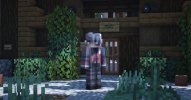This document has been worked on by @Demurity @Yume_ @Oli @jayseph_ @RexLobo and the lore team as a whole. A very special thank you to everyone who helped with the making of this lore. A very special thank you to Aania for providing screenshots.
Consider this as the entire history of Karakura.
You may take this document as an IC History Book.
=
While wandering through the school library, you stumble across a book titled "History of Karakra" and its author "Hashirama Takagi". As you open the book, you come across the different eras of this mysterious island.
HISTORY OF KARAKURA - 2ND EDITION
Prof. Hashirama Takagi
IZU-KARAKURA
Karakura (空座町, Karakura-cho, Izu-karakura) is an islandic city located southeast of Tokyo, a fictional place noted as the largest island in the Izu archipelago. Considered a special administrative area of Japan within the Tokyo Prefecture that includes its own government and constitution, its square length of 102.25km, and a mountainous range of Kohaku creating physical borders around its mass of land are what characterize the place as generally suburban and rural. The islands of the Izu archipelago include Oushima, Toshima, Niijima, and Kozushima. Karakura itself is also located closest to mainland cities such as Tateyama in the Chiba Prefecture and Yokosuka in the Kanagawa Prefecture. The second-largest island in Izu, Oushima, is famed for its active volcano which happens to affect temperatures within Karakura and other patterns in wildlife when it acts.

Karakura (空座町, Karakura-cho, Izu-karakura) is an islandic city located southeast of Tokyo, a fictional place noted as the largest island in the Izu archipelago. Considered a special administrative area of Japan within the Tokyo Prefecture that includes its own government and constitution, its square length of 102.25km, and a mountainous range of Kohaku creating physical borders around its mass of land are what characterize the place as generally suburban and rural. The islands of the Izu archipelago include Oushima, Toshima, Niijima, and Kozushima. Karakura itself is also located closest to mainland cities such as Tateyama in the Chiba Prefecture and Yokosuka in the Kanagawa Prefecture. The second-largest island in Izu, Oushima, is famed for its active volcano which happens to affect temperatures within Karakura and other patterns in wildlife when it acts.
Nara and Heian Periods (710-1192)
Even from very early on, Karakura benefited from its ocean, many of the inhabitants building their lives around fishing culture. Hunting and gathering were also within their prime for Karakura considering the bountiful state of the island. During the Nara and Heian period, much like the rest of Japan, there were many Chinese influences, Japan’s initial government system inspired from the Chinese model at the time. However, as the years progressed and Japanese script & literature was made from the development of Kana syllables, China’s influence declined gradually and Buddhist sects, including those in Karakura, were altered to Japanese preference.Japan went through multiple different forms of government as well as rulers throughout this time. Most notably, the Insei Government, in which emperors would take Buddhist vows before retiring to specific Monastery grounds. This came to an end in 1159, which marked the Heiji Rising, a fight between two powerful families that were also clans in Japan: the Minamoto and the Taira. Eventually, Taira Kiyomori succeeded as the leader of Japan and ruled the country from 1168 to 1178.
Kiyomori’s rule was faced with threats from two main groups- the Minamoto family, still militant, and many Buddhist monasteries across Japan. The Akatera Monastery was one of these, and in 1176 after their retaliation outraged the Taira family, the Monastery was subsequently burned by Kiyomori’s allies. This was one of two historical times Karakura’s monastery was burned to ash.
Kiyomori’s death made way for another war between the Taira and Minamoto clans, the Gempei War (1180-1185) in which the tides were turned as the Minamoto family came out victorious and Minamoto Yoritomo succeeded Kiyomori’s ruling of Japan. After getting rid of all of his rivals and potential enemies, Yoritomo created a new government in his home city of Kamakura.
Kamakura Period (1192-1333)
As the Minamotos took power over general Japan, Buddhist influence was introduced even more with the Zen and Lotus Sutra sects coming into play. A new military government was established, and with it, the Samurai.The Samurai- warriors of early Japan- were the leading social class in early Japan, and in Karakura, one specific clan, the Nashima Clan, was incredibly prominent in its affairs and glory. Karakura often got into skirmishes with other clans from neighboring and developing cities in the Kanagawa prefecture such as those of Yokosuka or Toshiyama. In Karakuran literature, it is said that they defended their lands valiantly from the opposing Samurai. However, Yokosuka and Toshiyama’s history argues that the Nashima clan oftentimes would be the instigator, sailing to their fronts.
Either way, the Nashima clan was known for unorthodox strategies and merciless, impulsive behavior. It is discussed that this generational influence is still present in the people of Karakura.
In 1228, the second variation of Karakura’s monastery was constructed, this time, under the name of the Kisune Monastery.
Harsh control was imposed on Japan by the Hojo clan in 1232, something that the people of Karakura were specifically unhappy about. Small acts of rebellion by Karakuran clans only further isolated the island from the rest of Japan. Karakura’s leading influence was economic, thanks to its firm hold on the seas surrounding it.
Governments shifted yet again through the chaos and fighting between emperors and the declining power of the Hojo clan, but Karakura remained generally unaffected, a neutral body throughout it all that fed on the chaos.
Muromachi Period (1338-1573)
The Nashima clan scattered into subclans of what it once was as the Muromachi Period began. Mainland Japan faced a new challenge- two imperial courts, the Northern Court and Southern court were often at odds, fighting for land. The Southern court eventually backed down, and Japan was once again united by the ruling of one emperor. During the division of the Southern and Northern Courts, an urn was found in the Kisune Monastery nicknamed the "Himitsu no Tamishi", or the "Urn of Secrets" after hearing faint noises from within. It is unknown as to who manufactured the urn or what secrets it possessed, but one thing for certain, it was enraged by the court division.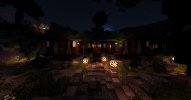
A nearby settlement was established past the Kohaku mountains, west of Karakura named Tsubasa for those that seeked a less of an urban life and more of a rural one. The settlement was led by the Tsukasa family as grounds for their hunting.
Whilst Shogun Ashikaga Yoshimitsu was in power, the Muromachi Bakufu was incredibly capable of reigning over Japan’s central provinces, but the severe influence was lost on the outer regions- Karakura being one of them, and officially in 1373, Karakura’s governance was isolated from the rest of Japan. However, domestic production was in its prime. Karakura began to not only establish a well-rounded market around its fishing trade but around categories such as glassmaking and logging as well.
The 1540s marked the beginning of foreigners in Japan. Portuguese and Jesuit traders were instrumental in introducing firearms and Christianity to Japan, the former being something Karakura took quite a liking to. Trade expanded between Japan and the West, and with it, Western influence. Karakura was especially influenced, oftentimes learning more through encounters with Western ships that reached its ports.
Even as Japan reached the 16th century, the battles for power did not cease. Warlord Oda Nobunaga made impactful progress towards uniting Japan, but Karakura still resisted the pull, engaging in constant talks with rival lords only to make unity more difficult.
Azuchi-Momoyama Period (1573-1603)
Throughout the beginning of this period, Oda Nobunaga managed to capture and unite almost all of Japan’s fronts, a reluctant Karakura included. Through the many battles, the island had taken significant losses- but isolation from the mainland gave Karakurans what became, essentially, a hivemind. When Nobunaga was murdered by a general in 1582, this hivemind came into play. Even as loyal followers of Nobunaga retook control in 1590 with the goal of uniting the country, Karakurans slowly began to alter laws and agreements in their favor which through the subtle changes and underlined arrangements of text, allowed them what was basically sovereignty and self-governance over their own island. The townspeople appointed three governors- Takeshi Saiky, Minoru Nashima, and Hinata Kaseya.It is worth noting, however, that Nobunaga’s most loyal general and the man who led Japan after him, Toyotomi Hideyoshi, used absolute methods to control Japan. Even though Karakura’s manipulation of agreements ensured that Hideyoshi’s government would rarely visit the island, Karakura fell victim like many other towns to the “Sword Hunt.” Karakura’s remaining samurai were forced to reside in castle towns, none of which were on Karakura’s island, and all weapons owned by non-military citizens were confiscated. Thankfully, Karakura had its own share of informants on the mainland, many of whom alerted Karakura’s self-proclaimed governors. And so began what one could call the start of Karakura’s contraband trade- Nashima and a group of his own men discreetly collected many arms of the people before Hideyoshi could, and after the “Sword Hunt” came to an end, they resold them for high prices back to the community after smuggling them in through a secret tunnel.
Unfortunately, this was one of Karakura’s few victories during the Azuchi-Momoyama period, if you could even call it one. Karakura once, along with its Monastery, had two castles dedicated to the Nashima and Saiky clans within the Itsbyoshi forest. Another one of Hideyoshi's absolute methods meant that during the civil wars Hideyoshi faced, both of these castles were burnt despite Karakura’s consistent statements of neutrality surrounding the neighboring conflicts. When Hideyoshi’s men were met with outrage and rioting from the clans and citizens, they burnt down the Kisune monastery.
In 1587, Christian missionaries were expelled from Japan. However, many objects of Western influence were left behind in Karakura, and alongside its native religions, Christianity was also discreetly practiced in the city. The era concluded with Tokugawa Ieyasu succeeding in Hideyoshi as the most powerful figure in the country.
Edo Period and the Two Courts (1603-1868)
Under Tokugawa Ieyasu’s rule, Karakura was granted a daimyo, Hishison Kota, who rebelled and broke the island free from the dictatorship. This is the beginning of Karakura's pseudo-independent status and the start of the Hokuseibu Court. The Hokuseibu Court was established in 1603 and marked the beginning of new freedom. Within this context, this freedom was especially enjoyed by the leftover kabukimono, a group of somewhat eccentric and violent people who led Karakura’s first street gangs, who ruled the night. They were first seen in 1615, roaming the city of Karakura. The Hokuseibu Court, based in Hokuseibu-Karakura, in Hokuseibu Palace that was owned by the Tatsumiya family, was the base of operations for all governing of the island. During the initial years of the Hokuseibu Court, the Kisune monastery was rebuilt by patriotic families that practiced religion with pride. The Nashima branches, Saiky houses, and Moritachi clans led by Kazuya Saiky rebuilt the monastery under the name of the Shinsei Seinaru Monastery in 1617. The monastery still stands to this day and is considered a major place in Karakura’s history.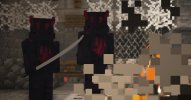
In the August of 1622, a raging fire broke out within the Ochiba forest. The exact cause was unknown, but fingers were pointed towards an aspiring group of rogues trying to create the second rise of the kabukimono in Karakura. After the fire had burned through to completion, the group revealed their name to be Hōka-han Senshi. (Literal translation: arsonist warriors). Equipped with swords smuggled in by remnants of the kabukimono clan, they wreaked havoc within the town. As time passed, chaos ensued until the 1650s with the group dying out shortly after. This was the first of many peaks and valleys of organized crime within Karakura. The Hishison and Tatsumiya Clans held the reigning power in Karakura up until the rise of another certain clan, the Takagi Clan.
The Takagi Clan, a clan residing within the Itsbyoshi forest, was famous for its educational methods and immense knowledge. Its teachings spread through the island like rapid fire during the middle of the 17th century. After catching the eye of the Kaseya Clan, the two families connected themselves via the marriage of Tsugumi Kaseya and Hachiro Takagi. Tsugumi, declared a marvel of Karakura, was titled as the 'Regent of Hokuseibu' and 'Mother of Karakura', and ruled the island with the Tatsumiya, Hishison, Kaseya, and Takagi families as her courtiers. Toward the end of her reign and death, she declared a new court be based in Itsbyoshi with influential, powerful families that have risen named the 'Itsbyoshi Families' later down in history.
The Itsbyoshi Families are a collection of families that ruled Karakura after Tsugumi, rising in popularity and power. In total, the thirteen families all had a specific sector to oversee in Karakura and thus established the Itsbyoshi Court which was initiated in 1696. This court was the main dominant power in Karakura, instituting justice and laws, and decrees that were signed by the emperor. The era in which the Itsbyoshi ruled was called the Kyōdaina Era; a golden era many called.
Meiji Period (1868-1912)
The Meiji Restoration took place in 1868, removing the Tokugawa rule and replacing it with an Imperial system. Along with the newly instated emperor, many constitutions took place which changed Japan into a westernized version of itself.Karakura’s economy boomed in 1892 with the introduction of a stable economy that included the export of silk, cloth, and oak wood. Individuals and organizations that were already in the industry skyrocketed with their money, starting several projects that would boost Karakura into a better future. This included the education sector of Karakura. As more people came to Karakura to follow the economic boom they brought more money, artificially inflating the value.
The Itsbyoshi Court was disbanded shortly before the economic boom Karakura experienced, proving that the island would be better off without a family or an organization ruling them. The reasons behind the court's disbandment were unclear, but many guessed it was due to the Nashima Clan's true face making an appearance.
In 1905, the Second Karakura Criminal Wave hit, crashing the high-mighty economy the city had and lowering its reputation amongst the Japanese.
Taisho and Early Showa Period (1912-1945)
Emperor Taisho rose to power in 1912 shortly before the First World War. Karakura, already in a devastating state after its second crime wave, would only suffer from what was to come. Sons and daughters were sent to serve in the military forces of Japan. Nearly 30% of Karakura’s population has left the island in order to aid and serve in the war, crashing its market and supply and only increasing the demand. Hideouts to hide citizens were made within the caves of the Kohaku region and plans were made if Karakura was to ever be attacked. Fortunately for the anguished island, there were no direct attacks made; however, another devastating event had happened. Of the 30% that left, only 14% returned, resulting in a major grief period by the end of the war.The years after 1919 were not joyful for the Japanese, including Karakurans. The Great Kanto Earthquake hit in 1924 and resulted in disastrous catastrophes by destroying most of the city. The Itsbyoshi castles opened for those that were in need of shelter. Children raised within such horrid conditions weren’t given the proper education needed, something that will be turned around in the future. In 1935, a rock slide caused a marketplace north of town to get destroyed, killing 56 individuals with 20 of them being builders of what was going to be a new shopping district. These disastrous incidents caused another drop in the population after the war.
It only worsened with the Second World War. Not only another wave of Karakurans leaving the island to serve the country, but also bombings. Across the six years of the war, Karakura was bombed three times. The first bomb was in 1941, north-west side of town where the Masahiko palace was located. The second, in July 1943, hit the center of town where Karakura Highschool and College is located today. Lastly, later that year, a third hit the coast of Kaiga, Karakura.
The Otori Corruption (1945-1956)
It had been 40 years since Karakura saw proper peace. It was during this era that they were able to breathe a little. The Government of Karakura was formed on the 3rd of September, 1946, and four governors were elected: Chizuru Kato, Murasaki Kaeda, Han Mizukawa, and Tetsuya Otori. The newly formed government established the Karakura Police Department, Karakura Hospital, and Karakura highschool. These three institutions were established between 1946 and 1947.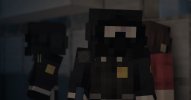
One of the governors, Tetsuya Otori, came from the foul Otori clan which desired power more than anything. Seeing the position Tetsuya was placed in, the clan immediately formulated a plan, and over the course of the next 3 years, Otori placed members of his clan in high positions. Inaba Otori was made Commissioner of the Karakura Police force, which had ten men under his command. Karakura Hospital also received an Otori director, Hisako Otori. The Otori, with their corrupt nature, brought a new wave of crime named the “Karakuran Financial Crime Wave”, or, in short, Postwar Crime. The wave peaked in 1950 with the entire island bowing to the reign of the Otori family.
Governor Chizuru Kato spoke out about the new reign, attempting to file a complaint to the Japanese government but before she could even plan it, she was found dead in her house, murdered in 1951. The Otoris were responsible for Kato’s death; however, that was not revealed to the public until 1954. When they found out, Karakura’s citizens caused an uproar and rioted against the Otori. Inaba Otori remained as the last Otori higher-up in Karakura before being fired from his job in 1956 after a two-year investigation conducted by the Government of Japan and was later replaced by Junpei Saiky. This was the final family-related reign in Karakura before 2017. The next 61 years in Karakura were filled with harmony.
Itsbyoshi Rise (1956-1964)
Four major supernatural incidents occurred during what was named by historians as the “Itsbyoshi Rise” between the years 1956 and 1964. There were many incidents reported during this era, but only those four were ever confirmed by historians.In 1958, the Itsbyoshi forest, a forest surrounded by the Itsbyoshi palaces, was reported to be haunted by a group of American explorers that have recently visited Karakura. The explorers also requested to conduct research on the surrounding palaces but were denied, leaving the lingering question of whether or not they are haunted. William Richards, one of the explorers, was reported missing a week after the group's arrival. The people of Karakura, already knowing such fate would come to the explorers and already warned them about entering the forest, told them about how not everyone returns from the forest.
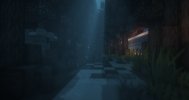
The boiler room in Karakura Highschool exploded on the 26th of March, 1959, with no casualties, fortunately. After an investigation was conducted by the Karakura Police Department and several experts, they determined the cause of the explosion to be unknown. No student or faculty member was even near the boiler room, to begin with, and the pipes seemed to be fully functional. This was one of many haunting incidents in Karakura with no answers to the questions.
A traditional Japanese hut located within Kohaku was the setting of a supernatural event that caused three Karakura Highschool students to seek aid at the Shinsei Seinaru Monetary by a priest who was known for his exorcism in 1960. According to the students, they discovered the hut earlier that week during exploration and decided to spend a night in the hut. That was a grave mistake for them as a poltergeist haunted the hut and spooked the teenagers.
On the 7th of August, 1963, Matsuoka Takara, a teacher in Karakura Highschool, was found murdered with 16 stab wounds by two passing students. Stood looming above him was Satomi Kato, a star student at Karakura Highschool. Reasons for murder were unknown and when questioned, Satomi never showed indication of remorse or regret and acted as if she committed no murder. Due to the unnatural behavior of the former student, she was sent to a mental institution.
The Education Boom (1964-1987)
After many incidents revolving around students going missing, teachers murdered, and rooms exploding, Karakura Highschool established a new plan that would raise its reputation among the prestigious schools of Japan.The changes that occurred resulted in a rise in population, especially youths that migrated to the island to continue their studies, an economical boom, and an interest of westerners in the island. Infrastructure in Karakura developed further, making the city a social hotspot for businesses and the economy, of course. Proper sewage was put in place, and several tourist attractions were created such as Karakura Pier and Tagashi Pathway Park. During this time period, foreign architects arrived in the city to construct four train stations: Zikani, Shinboshi, Masamaru, and Kagoshima.
By the mid-1980s, Karakura Highschool had a college education system added which was renamed Karakura Highschool and College. Students were able to not only receive a high school diploma, but also a bachelor's, master’s, and doctorate’s degree. Karakura sports teams were introduced and went against other regional and national teams, even once reaching the final rounds.
Westernization (1987-2006)
Due to the city’s daily advancements and improvements, it had caught the eye of individuals looking for new opportunities. A new wave of expatriates arrived in Karakura, and this time, they were not familiar with Japanese culture at all. The westernization Karakura is in right now is mostly due to the Christian missionaries that remained on the island in secrecy from 1587. It was always known that the cities within the Tokyo prefecture were different than the rest of Japan, especially Karakura.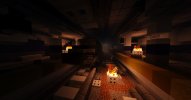
A large number of families migrated to Karakura between 1993 and 2006. Many prominent Chinese, English, German, American, French, and Russian individuals were part of this migration. Other families included former mayors’ families, Akihito and Akai.
On the 25th of September, 2005, the Masamaru train station collapsed and trapped two Karakura Highschool students, Shibata Saburo and Kajiwara Hanako. This was the result of negligence from authority figures in repairing the station when it was clearly about to go into ruins. The government was to blame and newspapers from all across Japan reported the incident. The families of both students attempted to sue the government but renounced their decision for an unknown reason. Theories speculate that the mayor at the time paid the families off.
Before the Storm (2006-2017)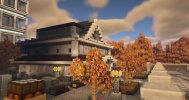
Day-to-day life continued in Karakura in the years following 2006. Karakura Highschool and College would graduate students of high importance that would become leaders of tomorrow. Karakura was divided into 12 districts and its roads were given proper names. Of these 12 districts, 2 were entirely new. Business park, a place of high economic importance, was established west of town near the hospital. North-Western Karakura, was also a new district that was added, and within was an empty plot of land looking for a new owner. In 2015, the Zikani train station's elevator collapsed with no casualties and a few injuries.Rumors of the Itsbyoshi forest continued with people entering and never coming back. As a result, the town hall decided that the forest would be considered government property and all individuals that are found within it will be deemed as trespassers.
Modern Day (2017-2024)
The people of Takashima moved to Karakura after it flooded. Karakura underwent another familial reign, a fourth crime wave, and several commissioners within the same year. It was a new era filled with ups and downs and will be noted in this history book as Karakura’s Storm.
Last edited:


